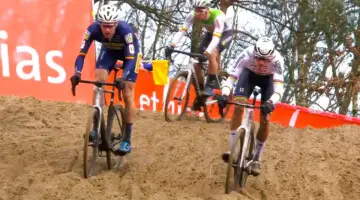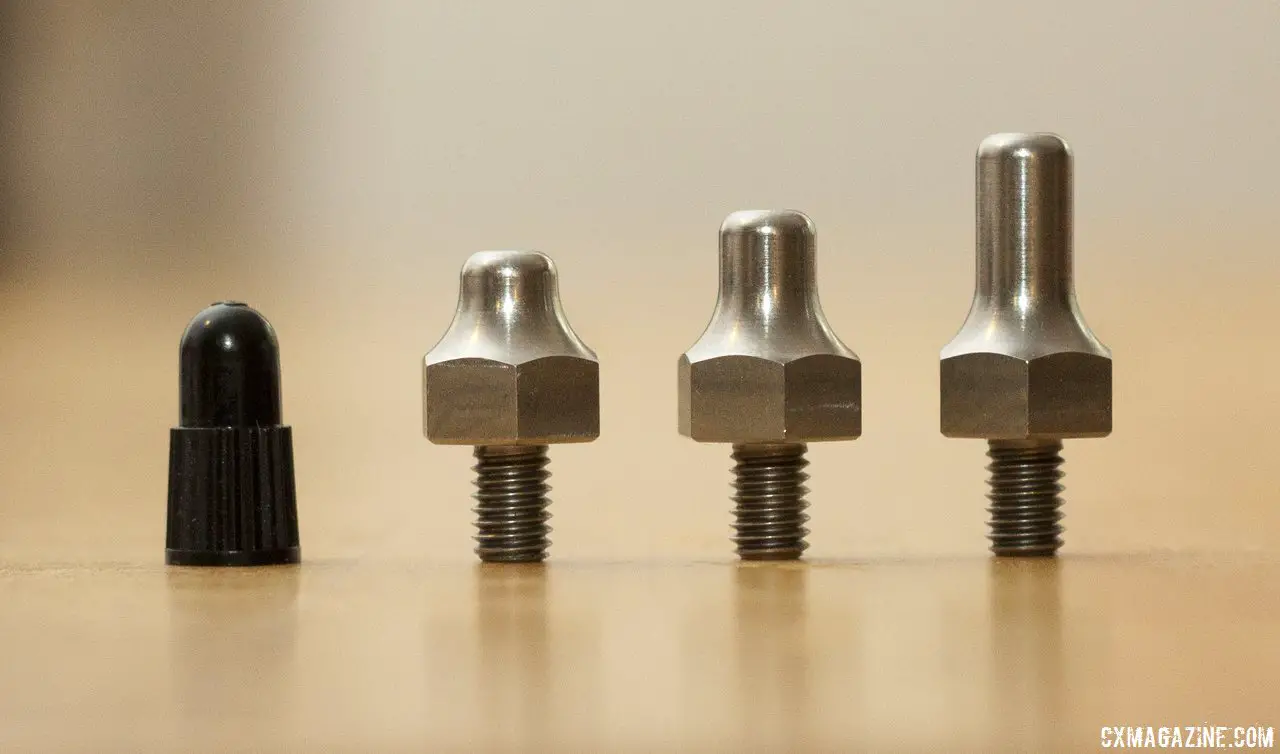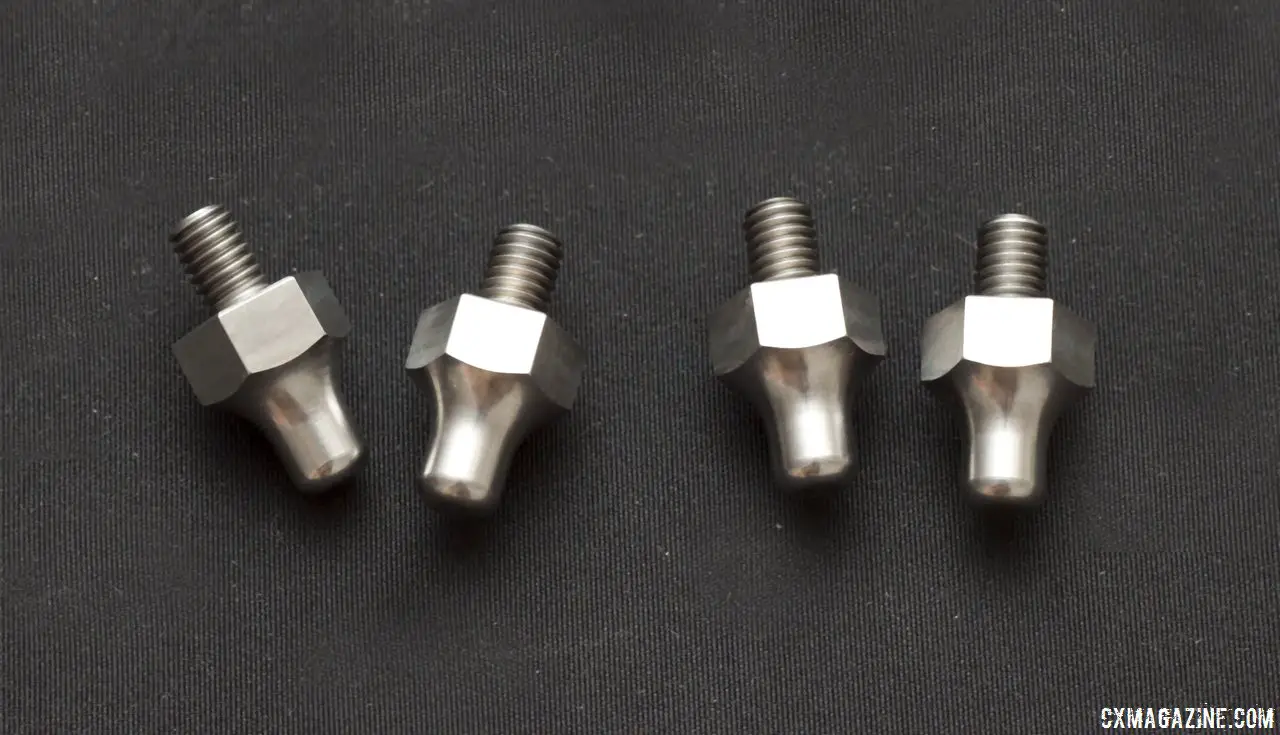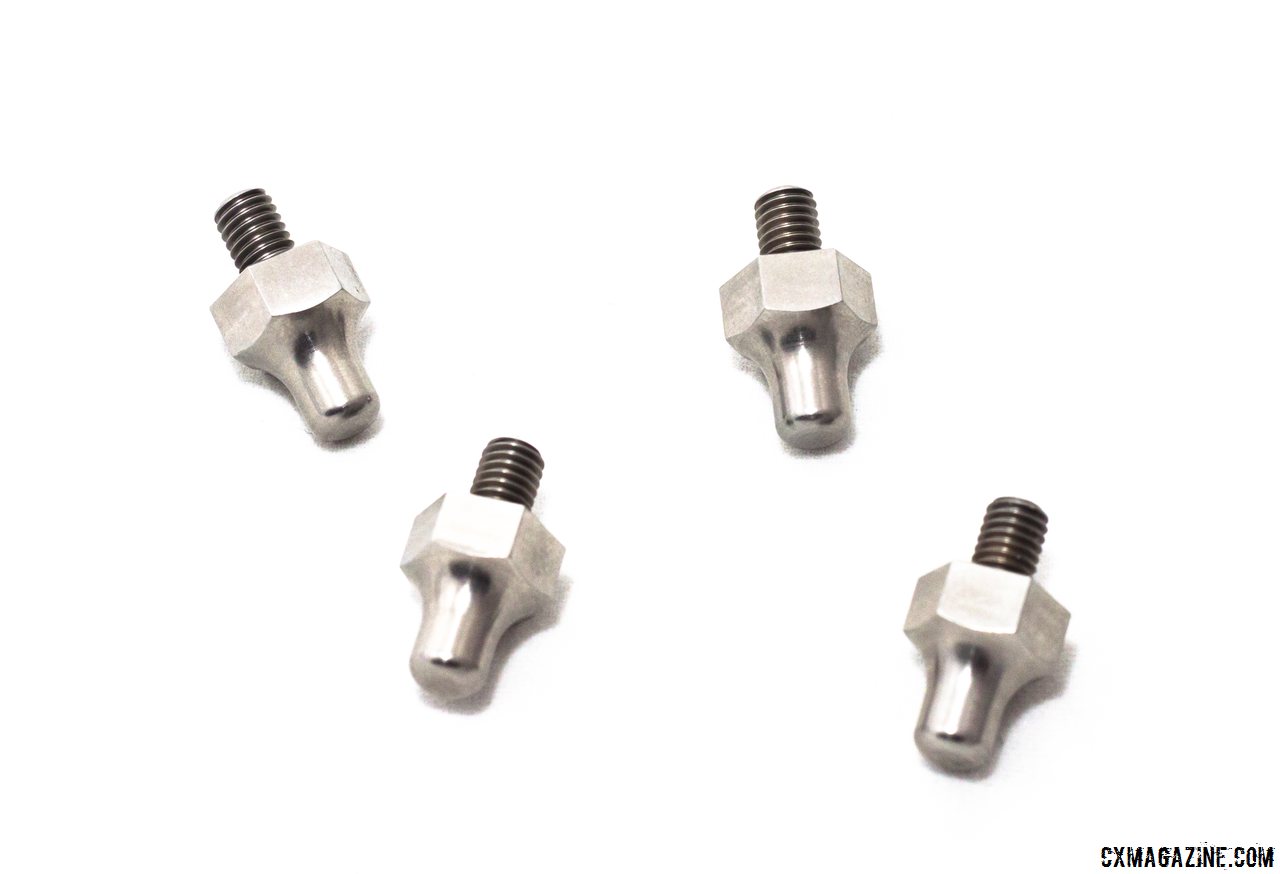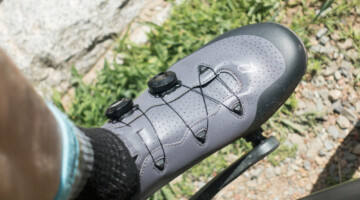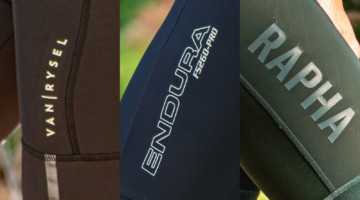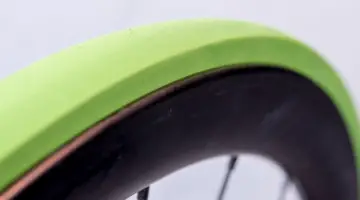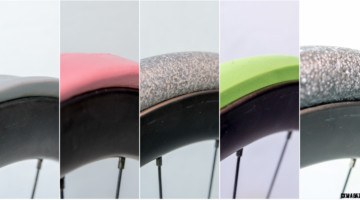Between ice, snow, mud, brutal run-ups, and other brutal obstacles that can be found on a cyclocross course, racers could be sensibly excused for trying to find every advantage they can. While cyclocross courses are becoming more ride-heavy than run-heavy, nasty run-ups remain a popular obstacle for designers.

Horst Spikes come in three different sizes, as well as a pointy cleat meant for ice and snow (not pictured). © Cyclocross Magazine
For the first few laps of the races, these run-ups become a bottleneck of racers slipping and sliding, attempting to find whatever footing is available to them. For the tech-savvy riders, these climbs are made easier with toe spikes.
Horst Engineering released a new line of spikes right before the season got underway, joining the fray of companies like Sidi, Shimano, and Lake Cycling, who all believe in the benefits of spikes for cyclocross. While spikes might not be anything new to the sport, Horst Engineering believes they have a superior offering of sizes and durability for their models.

Spikes provide traction in incliment conditions where mountian bike. shoes would slip by themselves © Cyclocross Magazine
Cassie Maximenko, a rider sponsored by Horst, used the company’s medium length spikes for all of last season. “Some toe spikes, because they’re so fat, don’t dig into the hard stuff, and actually cause you to lose traction. These were always grippy and didn’t cause my shoes to pack up,” he said.
Perhaps due a longer tradition with soccer, spikes are often referred to as cleats, which can be confusing when you consider their placement near shoe cleats such as SPDs, Crank Brothers, Time, etc. One of the larger hesitations many riders have with installing spikes is that while in ice, mud, or snowy conditions, they are certain of the increased traction, but when they run on solid rock faces or concrete, those benefits are turned into a slippery disadvantage.
Scott Livingston, President and CEO of Horst, uses the spikes in all of his New England races, including NBX with a paved section leading into a set of concrete stairs. While he admits that the longer spikes will get plenty of wear, he says that his spikes are “not slippery at all” in those conditions.

In general, spikes can offer an advantage, most noticeable on a difficult run-up. © Cyclocross Magazine
Livingston told us that the spikes were made with the brutal weather conditions of cyclocross in mind. He said that “the spikes [he] bought commercially were inferior. They came in one size, would rust, and they didn’t last a season.” These are problems he is hoping he’s improved on.
We were able to get a hold of our own sets of Horst Spikes for testing, and an extensive review is yet to follow. The spikes come in four different sizes, with one model more pointed for snowy and icy conditions. They come in a pack of four and weigh out as the following per set:
small: 23g
medium: 25g
large: 28g
The three sizes each retail at $15.99 for a set of four, a combination pack of all three different sizes (totaling 12 spikes) retails at $42.99, and the Ice & Snow Spikes retail at $16.99.
More info: Horst Engineering Spikes











